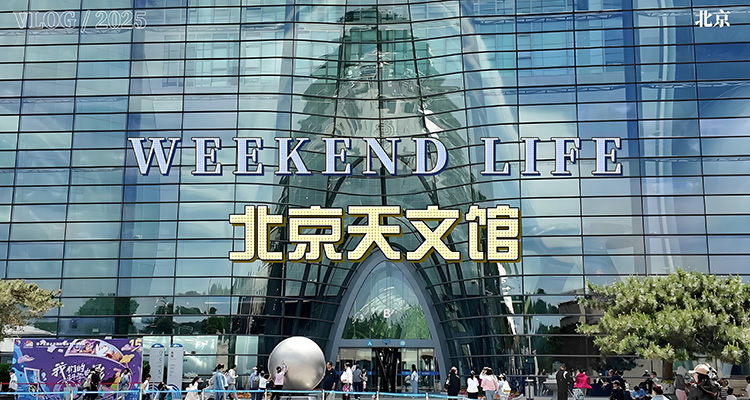Beijing Museums Planetarium Explore Stars, Space Exhibits, and Astronomy Education
In the heart of bustling Beijing lies a place where you can travel across the galaxy and explore the mysteries of the cosmos—the Beijing Planetarium.
Located at No. 138 Xizhimen Outer Street in Xicheng District, the Beijing Planetarium is China’s first planetarium, established in 1957. As a national-level natural science museum, it serves as a vital hub for public astronomy education while combining visual spectacle, interactive fun, and scientific learning. The planetarium features two main buildings: Building A (Old Hall) and Building B (New Hall), offering star simulations, astronomy exhibits, and hands-on experiences that open the door to the wonders of the universe.
1. Why You Should Visit
The Beijing Planetarium stands out for its blend of historical significance and modern technology. It is the only large-scale professional science center in mainland China dedicated to astronomy education for the public, making it uniquely important among similar venues.
Building A, the original hall, retains traditional architectural charm and houses a stunning 23.5-meter domed star theater. Building B features modern, high-tech interactive displays that make learning about astronomy fun and engaging. This combination allows visitors to feel both the historical depth of astronomy and the excitement of cutting-edge space exploration.
The planetarium is a National First-Class Museum and a 4A Tourist Attraction, playing a key role in nationwide science education. Whether you’re an astronomy enthusiast or visiting with family, the planetarium provides a rich and engaging space experience.

2. What You’ll See
The exhibits and experiences are divided between the two main buildings:
Building A (Old Hall) highlights:
- Star Theater: The 23.5-meter dome realistically displays about 9,000 visible stars. The show “Wonders of the Starry Sky” simulates celestial events such as solar and lunar eclipses, meteors, and comets, creating a sense of being in outer space.
- Foucault Pendulum: Demonstrates the Earth’s rotation, a classic and educational exhibit.
Building B (New Hall) features:
- Universe Theater: An 18-meter-radius hemispherical screen unique in mainland China, seating 200, delivering immersive 3D celestial visuals.
- 4D Theater: Combines 3D imagery with effects like water sprays and wind for an interactive science adventure.
- 3D Theater: Offers realistic and colorful 3D presentations of astronomical phenomena.
- Interactive Zones: Explore the Moon, meteorites, and the solar system through hands-on exhibits.
Additional highlights include a Solar Observation Deck (open on sunny days from 10:00–15:00) and a giant spherical slide in Building B, a favorite among kids.
3. Tips for a Smooth Visit
Suggested Route: Start at Building B, enjoy interactive exhibits and the Universe Theater in the morning, then head to Building A in the afternoon to watch the star theater show and explore classic displays. This helps avoid peak crowds and provides a smoother experience.
Time Needed: Allocate 2–3 hours for a full visit. Watching multiple shows may extend the visit to 3–4 hours. Weekday mornings are quieter than weekends and holidays.
Guided Services: Audio guides are available for rent (20 RMB with a 200 RMB deposit). English signage is provided throughout. Check show times in advance for popular performances.
Accessibility: The planetarium is fully accessible for wheelchairs and strollers, with smooth pathways and assistance services available.
Special Experiences: Don’t miss the Solar Observation Deck for viewing solar prominences (sun permitting, 10:00–15:00). The planetarium also hosts astronomy workshops for children and themed educational activities.

4. Getting There & Nearby Attractions
- Subway: Take Line 4 to Beijing Zoo Station, Exit D, and walk 1 minute to the east entrance.
- Bus: Multiple routes stop at Beijing Zoo, including lines 7, 15, 27, 105, 332, etc.
- Car: There is no public parking on-site and nearby spaces are limited. Consider parking at the Beijing Financial Technology Center or Beijing Exhibition Center (approx. 10 RMB/hour). Public transport is recommended.
Nearby attractions include the Beijing Zoo (within walking distance) and the Fossil Museum, just one subway stop away, making it easy to plan a full-day itinerary.
5. Tickets & Opening Hours
- Opening Hours: Wednesday to Sunday, 9:00–16:30 (last entry 16:00). Closed Monday and Tuesday, except holidays. Summer hours may vary (July–August, open Monday, closed Tuesday).
- Ticket Prices:
- Exhibits: Adults 10 RMB
- Theaters: Star Theater & Universe Theater 45 RMB, 4D & 3D theaters 45 RMB
- Children and seniors 60+ are free for exhibit tickets (advance reservation required).
- How to Buy: Tickets can be purchased via the Beijing Planetarium WeChat account, Meituan, or Dianping, up to 3 days in advance. During peak season, online sales may open at 18:30.
- Reservation System: Real-name reservations are required. Theater tickets include free exhibit access. Sales may pause if daily capacity is reached.
- Foreign Visitors: Purchase tickets with a valid passport, no additional requirements.

The Beijing Planetarium is a window to the cosmos, letting everyone explore astronomy in a fun and engaging way. Visitors gain knowledge, experience the awe of the stars, and enjoy a memorable journey through the universe, whether you’re a science enthusiast or just seeking a unique adventure.


